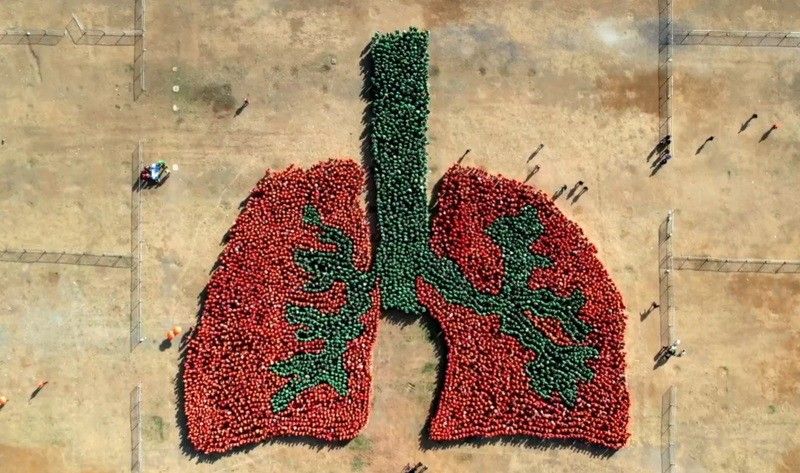DOH succeeds in Guinness World Record attempt for 'World TB Day'

MANILA, Philippines — The Philippines officially broke India's world record for the "largest human lung formation" in time for this year's World Tuberculosis (TB) Day — with over 5,596 participants gathering in Quirino Grandstand, Manila.
The attempt was led by the Department of Health (DOH), alongside its development partners on Saturday morning to raise global awareness about TB and to eradicate the stigma surrounding the disease.
"TB continues to be a global concern even in 2024. With over a million cases, the Philippines has the third-highest number of TB cases worldwide," said Health Secretary Herbosa in a statement.
"Unfortunately, among all infectious diseases in the nation, TB remains one of the leading causes of death even though it can be cured."
With the theme "Tuloy ang Bayanihan, TB ay Tuldukan," the attempt was attended by participants from various backgrounds across the country. Among them were health workers, 4Ps beneficiaries, university students and community members.
Over 5,747 people originally came to the event. However, 151 participants were disqualified after leaving, according to a Guinness World Records representative.
Saturday's effort aimed to surpass the record set by Lung Care Foundation and Petronet LNG in New Delhi, India in 2017 for the largest human image of an organ. The event drew 5,003 participants.
"Our attempt to break the Guinness World Record isn't just about setting records; it’s a call to action and a show of our shared commitment to overcome the challenges posed by tuberculosis," continued Herbosa.
"It's a movement to reshape perceptions, break stigma, and advance the global conversation on tuberculosis, following the directive of President Marcos to stop the TB problem."
Around 70 Filipinos die everyday from TB, a serious illness caused by a bacteria affecting the lungs, according to the 2023 data of DOH.
While deadly, it could be cured through free TB medication released through TB DOTS clinics across the country. Patients are usually placed under a six-month treatment without any break.
- Latest
- Trending































